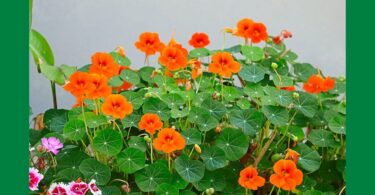Radko Tichavsky is a Czech born Mexican Agrohomeopath. He is a co-founder and director of Instituto Comenius in Mexico and author of Handbook of Agrohomeopathy, 2007 (Spanish) and Homeopathy for Plants, 2009 (Spanish), Organon de la Holohomeopatía and creator and teacher of Holohomeopathy.
He is now offering a one semester virtual course in Holohomeopathy (in English). You can learn how to define and analyze holons and how to repertorize the specific homeopathic treatment beyond just disease or pest names. You can find out more here: www.icomenius.edu.mx
NEW BOOK:
Organon de la Holohomeopatía
Six years in the making, it is the latest book by Radko Tichavsky, researcher on the application of homeopathy in agriculture. This Spanish language book covers homeopathic interventions in agriculture from the holistic view, allowing greater certainty in repertorizations. It addresses a novel concept of metabolic similarity, not only among plants, but also among different species of the animal and plant kingdom. It studies the formation and dynamics of attractors, areas of greater vitality within the holons and coexistence units of different living organisms Holohomeopathy is a fascinating contribution to the application of homeopathy to plants. It allows one to discover a universe of surprising relations in vital dynamism. It puts into the hands of the agricultural producer a valuable tool for the successful handling of pests and diseases in crops of any size. For ordering or information: [email protected]

Hello Mr. Tichavsky,
Attached are photos of my ailing Red Tip Photinia. It is afflicted with a leaf spot disease caused by Entomosporium Mespili. I live in Atlanta GA USA and enjoy very much your newsletters. I hope I can help this wonderful, old plant. The birds love it, too.

Thank you
Denise Aguilar [email protected]
Radko Tichavsky:
Dear Denise,
Most of the interventions against Entomosporium mespili, this important fungal pathogen, are based on trying to eliminate the fungus by means of fungicides, natural or artificial, and this strategy has only a temporary effect that eventually generates resistance of the fungus.
The best way to think about how to protect your plant is to apply defense enhancers; this may be useful not only because it eliminates the fungus but also prevents your plant from becoming reinfected in the future.
We use Astragalus canadensis 3 CH (based in hydrolate from the roots of this plant also known under the popular name Canda milkvetch). It contains collinsonin and collinsonidin two biochemical substances that have the ability to develop in the Photinia sp,. a specific systemic resistance against the fungus.
In addition we use Taraxacum officinalis 6 CH (made from the mother tincture – from the flowers of the plant) together with Alium sativum var. 6 CH (made from mother tincture from the garlic bulb). Both Taraxacum officinalis and garlic contain jasmonic acid which help in the same way to increase the resistance of the plant to the fungus.
It is required to apply the remedies with sap of Opuntia ficus-indica twice a day for 10 days. Even if the symptoms have diminished, it is necessary to finish with the cycle of application of 10 days.
Dear Mr. Tichavsky,
Could you suggest a non-toxic approach to the Fall Armyworm, Spodoptera frugiperda, which has begun occurring in maize crops in Gujarat, India. It can also feed on rice, sorghum, millet, sugarcane, vegetables and cotton. In maize, they damage the leaves creating small holes, and also damage the ear of the corn.

Gujarat climate is mild, with dry winters. Average daytime temperatures are around 83 °F(29 °C) and night temperatures around 53 °F(12 °C). The summers are very hot and dry. Temperatures rising up to around 105 °F(41 °C) and night temperatures dropping to 85 °F(29 °C). The monsoon season is from June to September. The mailing code for Gujarat is 382010.
Thank you
Ajit
Radko Tichavsky:
Dear Ajit,
Spodoptera frugiperda is a pest that causes great damage to corn and Sorghum crops in all tropical and subtropical areas worldwide. Depending on the size of the area, different holistic methods can be applied or even combined.
Interplanting of sunflower and corn can reduce the impact of the pest. Also, in corn interplanted with beans the damage reduction is about 20-30%. Even a rather rustic remedy like sand applied to maize whorls diminish the infestation.
It can also be controlled with a single application of Bacillus thuringuensis. The selection of the remedies depends on the economic possibilities and conditions of rusticity of each area.
As for the homeopathic management, we use Azadirachta indica 6 CH (outside the flowering period of the plant) with Helianthus annuus oil (in cold weather) and sap of Opuntia ficus-indica (in hot weather) as a coadjuvant applied in a spray to maize whorls and alternated with Cina 30 CH also applied to maize whorls.
Greetings Radko,
Growing Avocados in San Diego County California has one particular problem, the Avocado Lace Bug (Pseudacysta perseae, family Tingidae). It doesn’t seem to affect other parts of California, although it occurs in other states. It’s also called the Camphor Lace Bug (it also feeds on Camphortrees), and feeds on plants in the family Lauraceae family. The eggs are laid on the underside of leaves and look like grains of black pepper. They don’t directly attack the avocados but rather destroy the leaves. The zipcode here is 92037. San Diego County California has a sort of Mediterranean climate but much more dry. Could there be a holistic approach to this?
San Diego, California Climate
Rainfall 11.7 in. / Snowfall 0.0 in. / Precipitation 38.4 days / Sunny 266 days

Thank you!
Howard Kimmelman
Radko Tichavsky:
Dear Howard,
This infestation is new to the continent and there is very little information about it and its holistic management. It is known that the avocado Lace Bug responds easily to the application of two beneficial bacteria, Bacillus subtillis and Bacillus amyloliquefasciens ( you find it in the radicular system of Aloe vera for example) and two phytopathogenic fungi: Beauveria bassiana or Verticillium lecanii.
The application should be done in a spray with movement from bottom to top to reach the back of the leaves and with Opuntia ficus-indica sap as an adjuvant so that the application does not wash out with rain.
Pseudacysta perseae is an exotic insect, that is to say it doesn’t yet fine its connection with the holon. It has few specific predators and parasitoids. Among the two most active are Theridula sp. a spider from the family Theridiidae and Lyssomanes sp. a spider from the family Salticidae.
The second spider is the best cantidate to be a predator due to its exceptional eyesight and ability to move in the treetops. You can look for a specimen. They are a half transparent green color, difficult to distinguish and easier to capture at dawn.
Then prepare the mother tincture of the spider in alcohol at 30% and raise the dynamization to 6 CH to attract more of these beneficial spiders and send the warning signal to the Pseudacysta perseae.
Another strategy is to apply Glycyrhiza glabra 6 CH (made from the root). This contains up to 46 ppm of heptacosane, a pheromone which attracts Lyssomanes spp. and other predators.
Nicotiana tabacum 6 CH (extracted from the leaves of the plant) in addition to containing heptacosane, controls the activity of the Avocado Lace Bug. Just be careful not to apply this remedy during flowering as it is toxic to some pollinators.
We also use Azadirachta indica 6 CH (with the same restriction of not applying during flowering), and Larrea tridentata 6 CH sprayed on the soil 2 or 3 times in the spring with Helianthus annuus oil as coadyuvant, to interrupt the insect’s reproductive cycle.






